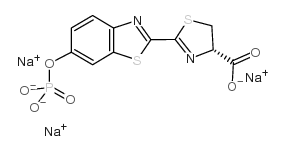| Structure | Name/CAS No. | Articles |
|---|---|---|
 |
D-Luciferin 6'-O-phosphate trisodium salt
CAS:145613-12-3 |
| Structure | Name/CAS No. | Articles |
|---|---|---|
 |
D-Luciferin 6'-O-phosphate trisodium salt
CAS:145613-12-3 |